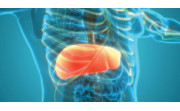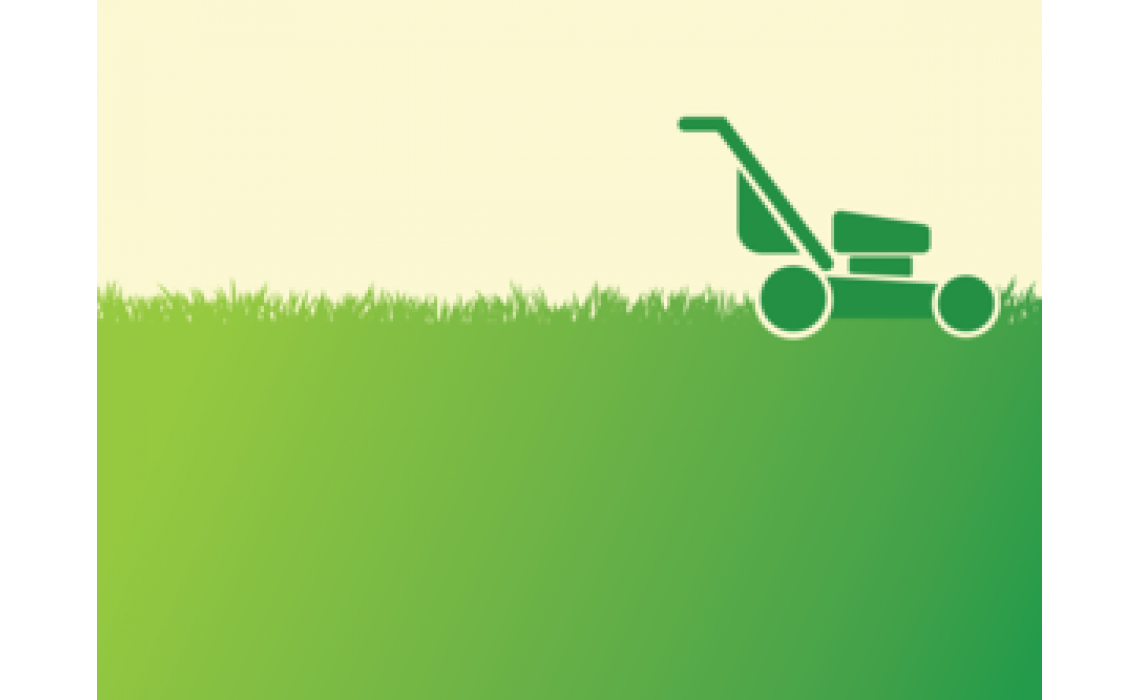NATURAL LAWN CARE: COMMONLY USED CHEMICALS & NATURAL OPTIONS
In the spring and summer months, those of us who have lawns, enjoy time in the park, or even like a nice round of golf are typically in awe of how lush the grass and landscaping can be. This lusciousness can come with a price. In most cases pesticides, insecticides, herbicides, and fertilizers are used. The more conventional products are full of chemicals that can be detrimental to human health. Unfortunately, a lot of us feel the need to sacrifice our health to have a presentable lawn. Others of us are bystanders of the use of these products by others. The airborne nature of these chemicals gets swept up by the wind and can travel for miles affecting those who don't use them. The good news is that Great Plains Laboratory has a test that will assess how much of these chemicals you have been exposed to. This profile is the GPL-TOX. There are a variety of resources you can peruse here to understand this profile better.
More good news about lawn and landscaping maintenance is that there are more non-toxic options. This post will discuss the dangers of common toxins used that can contaminate lawn care products and some natural options you can consider. This guide hopes to encourage natural lawn care practices for not only the health of your lawn but for the health of you and your family.

Great Plains Laboratory understands the harmful effects toxic chemicals can have on our bodies. Due to this fact, GPL offers a comprehensive non-metal chemical toxin urine profile, the GPL-TOX. It will help you to understand your exposure levels to commonly encountered chemicals and how much of an effect they may or may not be having on your health. Below are a few toxins we test that are also common in lawn care.

This chemical is one of the most common I see populate on the GPL-TOX profile. Due to its use in bleach, fireworks, rocket fuel, and in fertilizers it easily becomes contaminated; perchlorate is an easy chemical to become exposed to. Most people wouldn't expect washing a load of whites with bleach could contribute to a detriment to health. But the regular use of bleach could be more concerning than we initially thought. Perchlorate is the chemical of concern when using bleach. It is also a common concern in fertilizers. Fertilizers are usually the second most common source of exposure I see. This may be surprising since fertilizers do they say: this product contains perchlorate. That is because fertilizers are typically contaminated with this chemical. It's not really an added ingredient. Research shows that perchlorate is water soluble and flows with water. It has been found in many contaminated water supplies around the US. In fertilizer it is positively correlated with the sodium nitrate concentration and negatively with chloride concentration. Ores mined for sodium nitrate use in fertilizer have a higher risk of having perchlorate contamination.
So why is this chemical so important to human health? Acute symptoms of toxicity include nausea, vomiting, diarrhea, and eye irritation. Perchlorate (ClO4-) is also a known thyroid disruptor in elevated, chronic levels. The mechanism at which this happens is at the Na/I- symporter of the basolateral membrane of the thyroid gland. This fact is so well known that high doses of perchlorate used to be used as a treatment for hyperthyroidism in the 1950s. Its use was eventually discontinued due to a high number of aplastic anemia cases post treatment. Perchlorate disrupts the transport of iodine into the thyroid which limits thyroid hormone production. Long term consistent, regular exposure or an extremely large exposure in a compromised individual is needed for this chemical to cause substantial disruption. So, with application of contaminated fertilizers around your home or workplace this would open you up to a consistent exposure rate. Also due to its contamination nature, water supply should be evaluated if you find this toxin populate on your results.

The next group of chemicals are commonly used as pesticides known as organophosphates. Whether it be a large landscaping company or your next-door neighbor that loves to garden, organophosphates are regularly used pesticides. What makes them so effective? The way that they work is by inhibiting acetylcholinesterase. This enzyme is required for the degradation of the neurotransmitter acetylcholine into acetic acid and choline. If acetylcholine is allowed to circulate without inhibition dysfunction sets in as neuronal transmission is allowed to continue unregulated at the muscarinic, nicotinic, and CNS receptors. This leads to death of microorganisms, which makes these chemicals a great pesticide option. Since they are so effective many lawn treatment products may use these as an active ingredient. There are many different chemicals that fall under this category so please refer to your GPL-TOX result for an exhaustive list of examples of what to look for in your products.
In humans, acetylcholinesterase inhibitors are common drugs like donepezil and rivastigmine. These types of drugs are used to treat things like myasthenia gravis, Lewy body dementia, Parkinson’s, glaucoma, and schizophrenia. When exposed to too many, like in organophosphate exposure, symptoms can arise. The prolonged enzyme inactivation leads to acetylcholine accumulation, hyperstimulation of nicotinic and muscarinic receptors, and disrupted neurotransmission, this is what leads to symptomatology. The most common symptomology includes acute headaches, dizziness, weakness, diarrhea, nausea, vomiting, salivation, watery eyes, and small pupils. Severe symptoms are seizures, slow pulse, difficulty breathing, and coma. Due to the neuromodulation disruption long term neurologic symptoms can occur, most commonly is peripheral neuropathy. Other symptoms include agitation, muscle weakness, muscle fasciculations, miosis, hypersalivation, sweating. Workers that apply these chemicals have high rates of exposure. Symptoms reported in these workers include impaired memory and concentration, disorientation, severe depressions, irritability, confusion, headache, speech difficulties, delayed reaction times, nightmares, sleepwalking and drowsiness or insomnia, and prolonged psychiatric illness. Avoidance and detoxification can reduce symptoms. Poisonings have been documented in the US. In 1999, 13,000 cases were reported to poison control centers, 3,000 to emergency rooms, with 83 fatalities.

This pesticide, also commonly known as Agent Orange, is a common lawn care agent. Many commercial products use this herbicide in their formulas. Plus, it is commonly used along with glyphosate. What makes this herbicide so effective in lawn care is its mechanism of action. It is a synthetic analog of a plant growth hormone called auxin. Auxin is not found in grasses so only weeds are affected. The synthetic auxin causes increased, prolonged growth that eventually speeds up the lifespan and leads to death. It is widely used due to it not having an effect on grass itself. This agent is used in many arenas like agriculture, landscaping, private citizens, and used with other agents in fertilizer products.
The dangers of exposure to 2,4 D are well known. Agent Orange was used as a war tactic in the Vietnam War. In war 2,4 D was used in combination with dioxin and another herbicide called 2,4,5 T. The prolonged effects have led to birth defects in offspring, cancer, and other illnesses. These exposures were large amounts for a specified timeframe. Nowadays, 2,4 D is used commonly as a home lawn care agent because the exposure is different than that of Agent Orange. There is a lower level of toxin exposure, but the exposure is for a prolonged time. Prolonging the time in which you are exposed to a toxin can be just as detrimental as a large one-time exposure. Currently in commercial lawn care products the use of dioxin and 2,4,5 T have been discontinued. What you would purchase in store is less toxic than what was used in Vietnam. But 2,4 D itself has been associated with the development of neuritis, nausea, abdominal pain, headache, dizziness, seizures, brain damage, and endocrine disruption.

The last toxin discussed here commonly used in lawn care is glyphosate. This herbicide is not available on our GPL-TOX profile, but it has its own test that you can consider when toxin testing. Glyphosate has gotten a lot of press since it was created in 1974. Its use is most common in agriculture, but also by private users. In agriculture, crops that are treated most often with glyphosate are soybeans, corn, cotton, wheat, alfalfa, sorghum, sugar beets, canola, oranges, barley, and several other crops. States that have large agricultural activity have the highest amount of glyphosate usage. These states include those in the Midwest like Kansas, Missouri, Montana, Minnesota, South Dakota, Iowa, Texas, and Indiana. In other states glyphosate is still used, just usually not at the same rates. There is also private use of this chemical. Most individuals would recognize it as Roundup. This is a common brand name of glyphosate. Just this summer I can remember seeing at least 3 neighbors throughout my neighborhood using Roundup to kill the weeds in their driveway or yard. It's still very commonly used in residential areas.
Glyphosate is touted as an effective herbicide due to its mechanism of action. The shikimate pathway is the biochemical pathway in which this agent acts. In some organisms it acts to block amino acid synthesis by inhibiting the binding of phosphoenolpyruvate (PEP) to the enzyme 5-enolpyruvylshikimate-3-phosphate synthase (EPSPS). This is the rate limiting step of the shikimate pathway in the production of aromatic amino acids: tryptophan, tyrosine, and phenylalanine. It also blocks the conversion of shikimate to chorismate, a common denominator in the production of many metabolites needed for microorganism life and virulence. Some of these metabolites include vitamins, enterobactin, and needed aromatic amino acids. By inhibiting chorismate’s formation or conversion to these metabolites, pests can be easily killed, and it opens up for research for the production of many antimicrobial agents at the chorismate junctions. The concern with glyphosate use is its effect on human health. Glyphosate is a known detrimental effect on renal function, chelates to metals like copper and iron, needed for human life, and interferes with CYP 450 enzymes. This herbicide also has the capability to disrupt folate synthesis from probiotics like Lactobacillus and Bifidobacterium, leading to folate deficiency and subsequent sequelae. Our good gut bacteria also have the shikimate pathway and are affected by glyphosate. This allows for the growth of opportunistic bacteria like Clostridia. Also, when they are damaged there are less available amino acids and minerals for our bodily function. One mineral decreased by glyphosate is manganese. A lack of manganese is related to mitochondrial dysfunction and neurotoxicity seen in Parkison’s, Alzheimer’s, and autism. It has also been linked to non-Hodgkins lymphoma and renal tumors.

So, what do we do? What other options do we as consumers have to reduce our usage of herbicides on our personal lawns? The good news is that anyone can switch to or start their lawn on a natural lawn care regime. The benefit of switching to a natural option is that for your health and that of your family your exposure to commonly used chemicals will decrease drastically. These options will also help you to understand the best practice for a lush lawn. Natural lawn care requires understanding your lawn and its needs. Also, by understanding the type of weeds present, you can create an inhospitable environment. Fertilizers are often used to support the growth of your grass and are a big part of caring for your lawn naturally. Natural fertilizers come in both dry and liquid varieties. Dry fertilizers are usually more affordable in bulk and best applied before the planting season, so great for gardeners. While liquids are best for the start of the season and mid-season and ease of application. These fertilizers are created with adequate nitrogen, phosphorus, and potassium (NPK) for lawn health. Most of these are commercially available in store or online. Types of fertilizer ingredients include the following:
Animal-based
Fish emulsions, blood emulsions, fish meal, shellfish, and animal manure
Plant-based
Alfalfa and soybean meal, compost, cottonseed meal, molasses, legume crop cover, green manure, kelp seaweed
Mineral-based
Calcium, epsom salt, greensand- a mineral blend from the ocean floor
DIY
Involve the combination of soda, soap, ammonia, beer, and mouthwash
DIY composting
More info on how to do this can be found easily online
*Each type has its own ratio of NPK that should be assessed for your lawn’s specific needs
In addition to choosing the correct fertilizer, knowing practices of lawn care can help your lawn flourish. Some tips to add to your lawn care habits via Beyond Pesticides are:
Mow high: by mowing too low you invite sunlight to the lower growing weeds. This allows for increased growth. By keeping your grass at 3-3.5 inches during the mowing season weed growth can be limited
Aerate your lawn: aeration allows for free flow of nutrients from the soil to the lawn. If the soil is too compacted for proper growth and can promote weeds.
Fertilize: adding the right fertilizer and leaving clipping on the lawn you will encourage grass growth and suppress weeds. Also consider compost as a source for your fertilizer.
Over seed: in the fall seeding your grass will ensure growth for your lawn. Be sure to speak with your local nursery to learn the best seed for your area.
A word of caution to using natural agents. Some of the agents may be harmful to pets. Some of the ingredients when ingested in large quantities can lead to GI symptoms, pancreatitis, and foreign body obstruction. These are usually seen from the direct ingestion from the bag rather than the ingestion from the lawn. Be sure to keep these agents in a secure place and keep a close eye on pets after initial applications.
By switching to natural lawn care options, we can reduce the number of pesticides in our lives and the lives of others. This reduction will lead to less health complications, as described above. When searching for products consider looking at the Organic Materials Review Institute (OMRI) this is a database that lists fertilizers, pest controls, and livestock care products. There is also a branch for Canada. Here you can compare various products to determine what is best for your lawn. Please view the reference section below for deeper reading into the info on various natural lawn care options.



